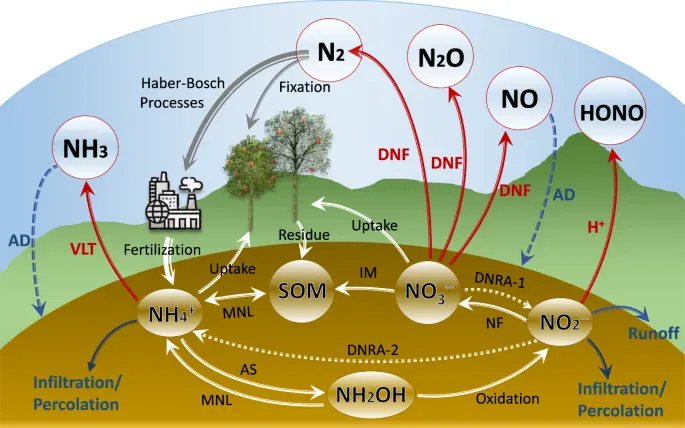In this age of heightened environmental awareness, the focus on sustainability has never been more critical. Among the many elements contributing to sustainable practices, nitrogen gas plays a significant role. This omnipresent component of the Earth’s atmosphere is instrumental not just in industrial applications but also in fostering environmental safety.
The Pivotal Role of Nitrogen Gas in Sustainable Practices
Nitrogen gas is a colourless, odourless, and inert gas that constitutes about 78% of the Earth’s atmosphere. Its inherent properties make it an invaluable resource in various sectors, including food packaging, pharmaceuticals, and electronics manufacturing. As an environmentally benign gas, nitrogen supports sustainable practices across different industries.
Sustainability in the Food Industry
In the food industry, nitrogen is employed to displace oxygen in packaging, which aids in extending the shelf-life of perishables, thereby reducing food waste. This practice not only ensures food safety by preventing oxidation but also promotes sustainability by minimising the environmental impact caused by the decomposition of food products.
Contribution to Renewable Energy
Nitrogen is also heavily utilised in the production of renewable energy components. For instance, during the manufacturing of solar panels, nitrogen gas is used to create a purged and inert environment, thereby enhancing the quality and efficiency of these sustainable energy solutions.
Reducing Carbon Footprint
The use of nitrogen gas aids in reducing overall carbon footprint by replacing more environmentally harmful substances. In industries where high-temperatures processes are required, nitrogen gas is used to prevent oxidation and combustion, leading to cleaner and safer production methods.
Enhancing Safety with Nitrogen Gas
Beyond its environmental benefits, nitrogen gas is instrumental in improving safety standards within various applications. Its inert nature means it does not react with other chemicals or compounds, which helps in preventing fires and explosions in potentially hazardous environments.
Preservation of Cultural Heritage
The preservation of historical artefacts and artworks is another area where nitrogen gas contributes to safety. By creating a controlled atmosphere, nitrogen aids in preventing deterioration caused by oxidative reactions, ensuring the longevity and safety of cherished cultural heritage.
Applications in Medical and Pharmaceutical Fields
In the medical and pharmaceutical industries, the use of nitrogen gas safeguards the integrity and safety of medicines by providing a stable packaging environment. This ensures that products remain uncontaminated and effective for use, further cementing the role of nitrogen in both sustainability and safety.
Minimising Environmental Impact with Lasers and 3D Printing
Another sustainable application of nitrogen is found in its role as a laser gas. Lasers used for cutting and welding often require an assist gas that facilitates the process without contributing to environmental degradation. Nitrogen gas serves this purpose, ensuring high-quality cuts and joins without producing any harmful emissions.
3D Printing Sustainability
With the advent of 3D printing, the need for environmentally friendly processes has risen. Nitrogen gas ensures that the controlled atmospheres in 3D printing chambers remain stable, reducing material waste and enabling the production of complex geometries that would be impossible to achieve using traditional subtractive methods.
Industrial Safety with Inert Atmospheres
In industrial settings where volatile substances are handled, creating an inert atmosphere with nitrogen gas can prevent the risk of combustion. By displacing oxygen, nitrogen ensures safer work conditions, which in turn aids in reducing the potential impact of industrial accidents on the environment.
Nitrogen’s Role in Quality Assurance
Quality assurance is a critical aspect of sustainability, as it ensures products are durable and reliable over a longer lifespan. The application of nitrogen gas aids in processes like steel-making and annealing where high purity levels are required. With better quality products, we see a decrease in wasteful manufacturing and consumption practices, underscoring nitrogen’s environmental advantage.
Reducing Dependence on Chemical Storage
Industries traditionally reliant on preserving chemicals for long periods can leverage nitrogen gas to reduce their chemical storage needs. By using an inert gas like nitrogen, they can minimise the risks and environmental concerns associated with the storage and disposal of reactive chemicals.
Complementing Other Environmental Gases
Nitrogen gas often works hand in hand with other gases, such as argon gas, to further sustainable efforts. Argon, similar to nitrogen in its inert properties, is also used for applications requiring a non-reactive atmosphere. Combined, these gases form a powerful duo in promoting environmentally friendly practices across various sectors.
Conclusion
Nitrogen gas is an unsung hero in the sustainability and safety realms. Its versatility and non-reactive nature make it an indispensable asset across multiple industries. From reducing food waste to ensuring safety in hazardous work conditions, nitrogen gas demonstrates how critical industrial gases are to our environmental health and safety. As we continue to strive for sustainable practices, the role of nitrogen and related technologies becomes more pronounced, further emphasising its essential contribution to a greener future.
Also Read-Tech Console DefStartup: Empowering Gaming Innovation


